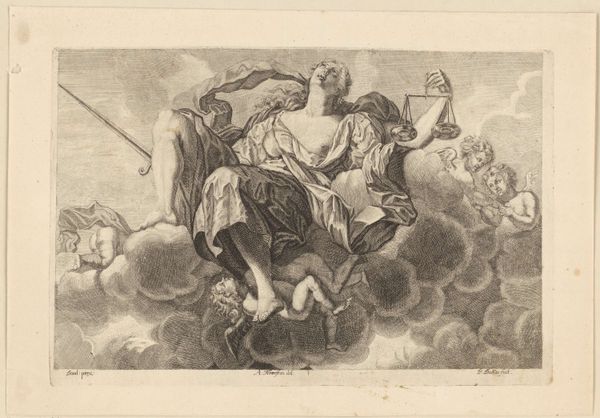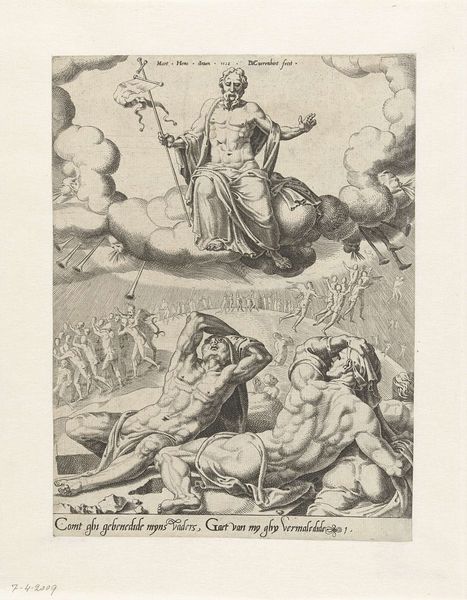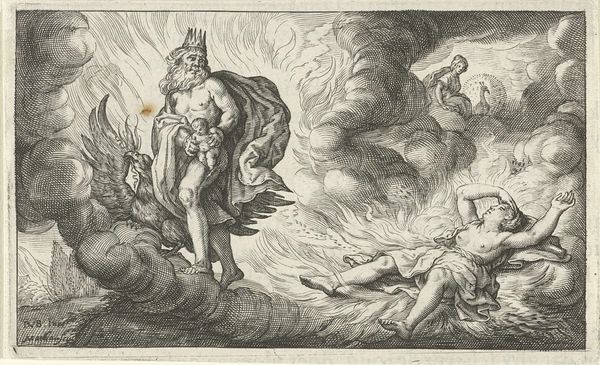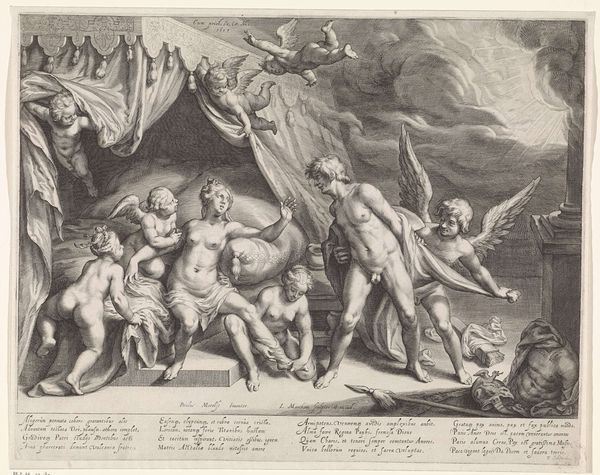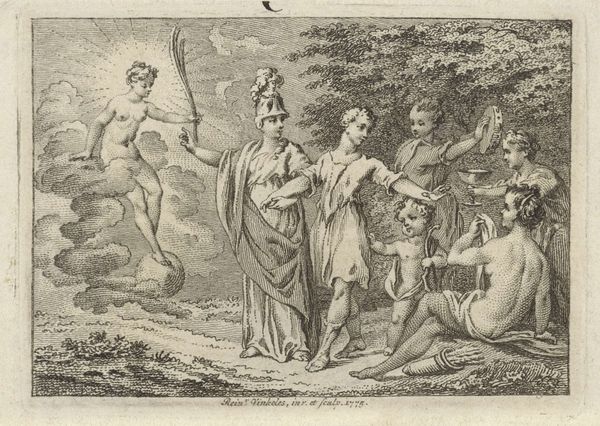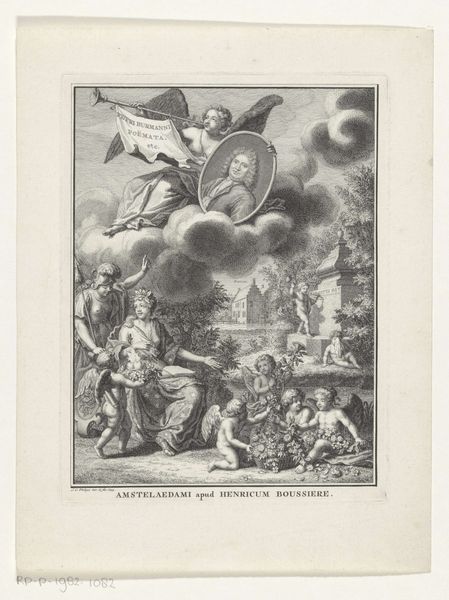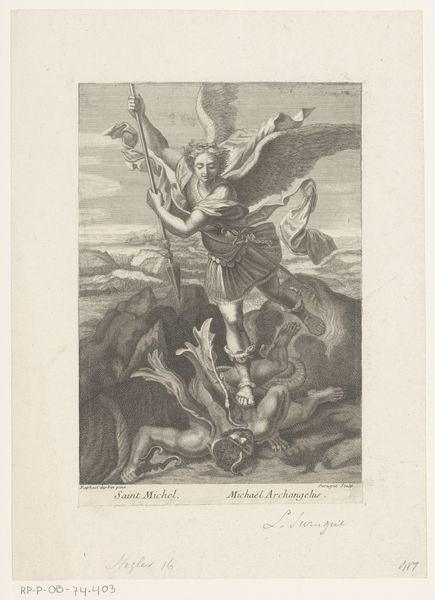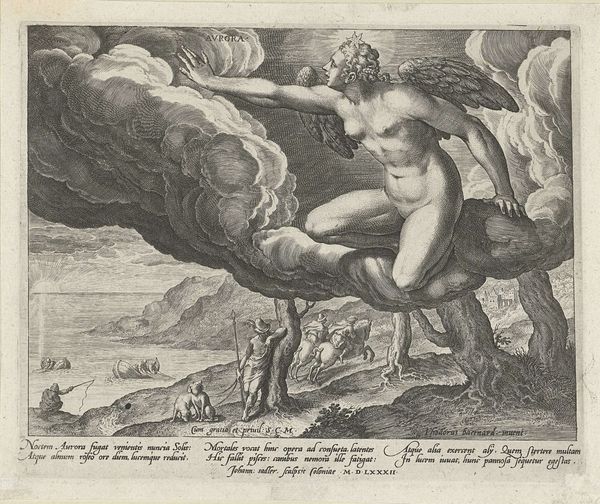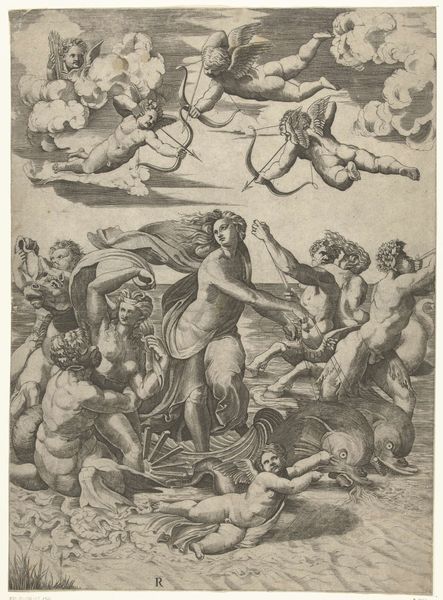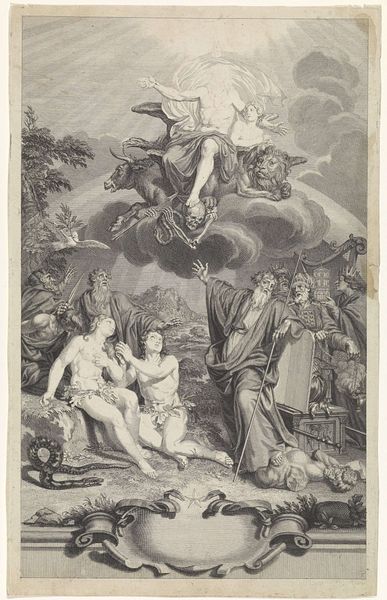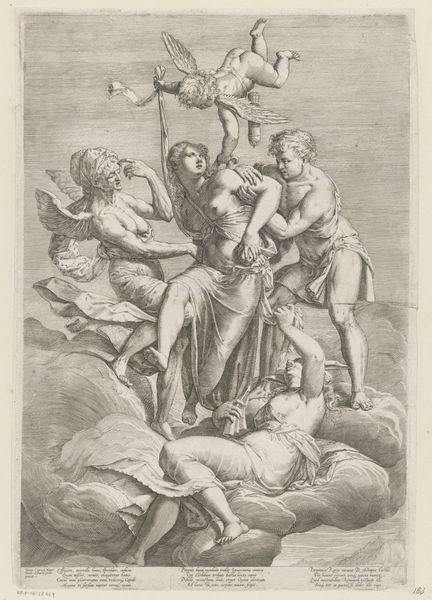
engraving
#
allegory
#
baroque
#
figuration
#
history-painting
#
engraving
Dimensions: height 172 mm, width 230 mm
Copyright: Rijks Museum: Open Domain
Editor: This engraving from the Rijksmuseum, titled *Boreas Abducting Oreithyia*, made by Crispijn van de Passe II, likely sometime between 1636 and 1670, really captures a sense of drama, doesn't it? It seems like a quintessential Baroque depiction of this Greek myth. How do you interpret the visual symbols within this piece? Curator: The dynamism certainly speaks to Baroque sensibilities, but look closer at how van de Passe uses symbols to amplify the narrative. Boreas, the North Wind, is easily identifiable with his wings, and even in his muscular physique, a clear display of brute force. He’s taking Oreithyia against her will, a moment rife with implications. Note also how cherubs both precede them, raining down flowers – traditional markers of a wedding, almost mocking in this case – and cling to the couple, complicating the tone. Editor: Mocking, yes, almost like Cupid compelled to attend an event against his will. The original abduction story isn't exactly a romantic tale, and those flowers contrast so sharply with the scene’s violence. Curator: Precisely. And consider Oreithyia's gesture, a plea towards the heavens; this reinforces her lack of consent, of course. How does her appeal contribute to your understanding of Boreas's action? Editor: It emphasizes the injustice. Boreas isn’t just claiming her, he's actively disregarding her desires. It casts a darker light on the idea of divine right. Are there other symbolic elements I'm overlooking? Curator: Look at the figures in the lower left; seemingly mortals but likely representing her attendants, watching in horror. And what do you make of the light bursting through the clouds, framing the couple? Editor: Perhaps it signifies the dramatic nature of the event. I initially saw it as heavenly acceptance, but the contrast of light and shadow now seems to amplify the turmoil. Curator: Indeed! It shows how powerful Baroque artists were using symbolism to show the nuances of the story. I had never thought of the attendant's horror contributing to my viewing experience before.
Comments
No comments
Be the first to comment and join the conversation on the ultimate creative platform.
